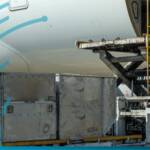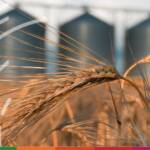Estimated reading time: 4 minutes
2022 was a year filled with ups and downs for trade technology companies, but there are many bright spots for 2023.
Industry actors are collaborating for many reasons: the promise of reduced risks, streamlined operations, increased transparency, and cost savings entice industry actors to collaborate towards incorporating cutting-edge technologies into their operations.
Veridapt and GrainCorp are companies that are actively involved in the technological development of the commodity and agricultural sectors.
To learn more about their collaboration and the role that technology can play in the commodities industry, Trade Finance Global (TFG) spoke with Peter Johnston (PJ), senior manager digital and agtech at GrainCorp, and Sean Birrell, CTO and co-founder of Veridapt.
Modern farmers face modern challenges
The pace of agriculture has accelerated rapidly over the past few decades, with mechanical and technological advancements increasing the scale on which many farms now operate.
PJ said, “Farmers today might have a harvester that harvests grain at 50 tons an hour, which is a lot of grain being harvested at a given time.”
This accelerated pace forces many operations to increase their on-farm grain storage because they simply cannot transport the grain fast enough from the harvester to traditional third-party storage depots.
More on-farm storage creates increased risk for the farmers, as they have more inventory at any time.
Internet of things (IoT) solutions, such as those provided by Veridapt, are being used to give farmers an accurate picture of the volume and quality of the grain they are storing on farm. This technology allows them to manage the grain better as they prepare to deliver it to customers or depots.
Establishing this visibility, however, is challenging.
“Many farms are very large and often quite remote,” Birrell said. “This can lead to communication and power concerns and can even make installation a challenge.”
“Being able to meet those challenges cost-effectively is where this generation of IoT technology is starting to shine.”

AgriTech can help to address these challenges
Newer IoT technology is designed to be easier to install, lower cost, more reliable, and with more straightforward configuration and setup, making it a cost-effective solution for the agriculture industry, which is under constant price pressure.
Birrell said, “The actual configuration and setup are getting easier all the time.
It’s a bit like how every time you set up a new smartphone, it’s easier than migrating from the last one.”
Now, the technology can often be set up in a matter of hours by individuals that aren’t necessarily experts – a vast improvement over the situation in the past.
The technology is also able to provide a fit-for-purpose solution that can be used in a variety of situations, including farms and large-scale supply chains.
But the new digital advancements are not just benefitting the agricultural sector.
Looking beyond the agricultural silo
Many solutions to remote monitoring challenges that seem unique to the agricultural space can be applied to challenges in other areas.
For example, agriculture supply chains are often faced with what is referred to as a floating balance problem.
Harvesters returning from the fields may be adding crops to on-farm storage at the same time that other trucks are taking crops out of the storage to deliver them to a local depot.
To have full transparency – which becomes more critical when some of these operators are sub-contractors – the deployed technology needs to go beyond aggregate measures of the entire storage.
It also needs a means of separately measuring both the incoming and outgoing supply.
“That challenge that we’re addressing in the agricultural industry also applies directly to the base metals industry,” Birrell said.
“Large stockpiles in remote areas are typically surveyed using traditional techniques that only provide one-off snapshot measurements. But there are certainly instances where you might need more continual flow-based measurements.”
Investing time and resources into developing the technology in one industry can uncover new and better use cases for that technology to be applied in adjacent fields.
Birrell added, “You end up with this virtuous circle of developing new capabilities and being able to advance the technology in each of those individual industries.”






































